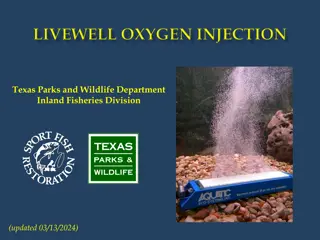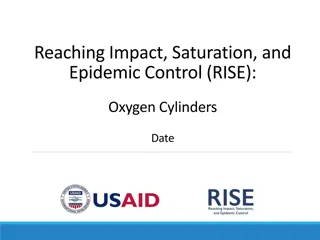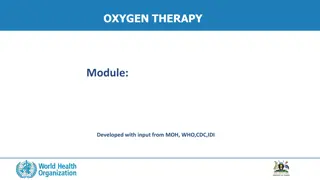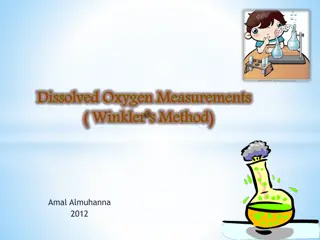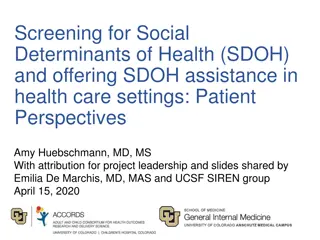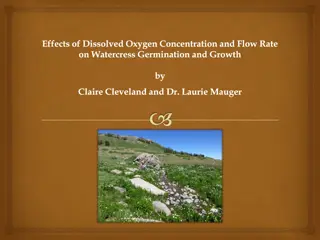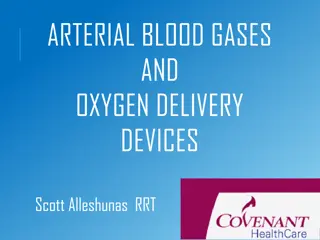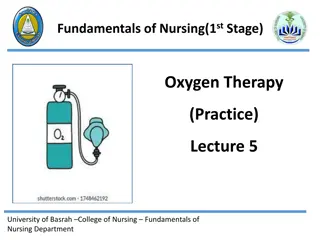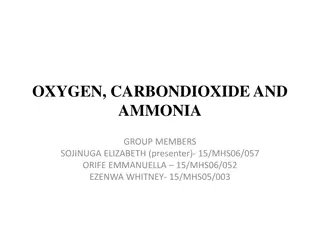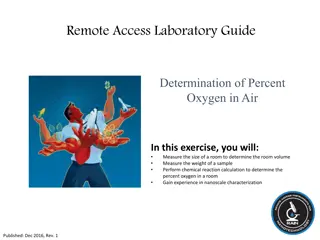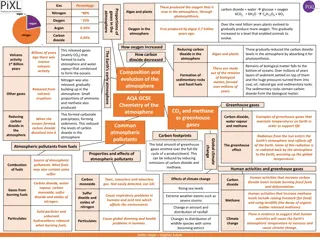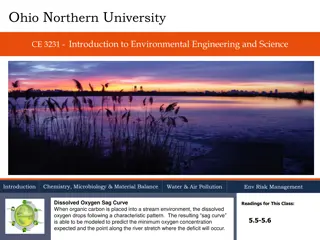Evolution of Oxygen Flowrates in Healthcare Settings
Discussions around oxygen flowrates in healthcare facilities, especially in the context of the COVID-19 pandemic, highlight the need for a review of current guidelines. The existing (S)HTM 02-01 guidance, developed around 20 years ago, is being reevaluated to align with modern clinical practices. Proposals for revised flowrates and diversities in various hospital departments, such as theatres, ICUs, and emergency rooms, are being considered to ensure adequate oxygen supply in critical care areas. Future-proofing piped oxygen systems against pandemics is also being discussed, raising questions about the potential cost implications.
Download Presentation

Please find below an Image/Link to download the presentation.
The content on the website is provided AS IS for your information and personal use only. It may not be sold, licensed, or shared on other websites without obtaining consent from the author. Download presentation by click this link. If you encounter any issues during the download, it is possible that the publisher has removed the file from their server.
E N D
Presentation Transcript
OXYGEN FLOWRATES (MGPS) Graeme Dunn BEng (Hons) CEng MCIBSE MIHEEM Authorising Engineer (MGPS) Merkland Design & Engineering Consultancy Ltd.
OXYGEN FLOWRATES / DIVERSITY SHTM 02-01 Part A provides guidance on oxygen flowrates within Table 13: Oxygen: design and diversified flowrates. SHTM 02-01 was issued in June 2012 and was generally based on the Department of Health HTM 02-01 standard which was issued in 2006. The discussion around flowrates and diversity was probably taking place in the early 2000 s meaning that the (S)HTM guidance was developed around 20 years ago. Clinical practice has undoubtedly changed in the past 20 years. Covid-19 pandemic and oxygen flowrates / diversity?
OXYGEN FLOWRATES / DIVERSITY The (S)HTM 02-01 guidance has served us well but needs a radical review to reflect current and evolving clinical practice. Single point flowrates and the diversity which should apply needs to be discussed for New Major Hospital Projects with the relevant clinical staff. This applies to oxygen in particular but also to the other piped medical gases including medical air. Should we be future proofing piped oxygen systems to deal with pandemic situations and how much extra would this cost:
OXYGEN FLOWRATES / DIVERSITY Recent discussions with the relevant clinical staff for a New Major Hospital project resulted in the following proposals for flowrate / diversity: Theatres should be 100 l/m for one Theatre with 10 l/m at each remaining Theatre (as per SHTM 02-01 recommendations); Radiological (MRI, CT etc.) should be 100 l/m for one room with 6 l/m at every third remaining room (as per SHTM 02-01 recommendations); ICU should be 60 l/m at every bed space (no diversity); Respiratory Ward (which could effectively be utilised as ICU 2) should be 60 l/m at every bed space (no diversity)
OXYGEN FLOWRATES / DIVERSITY In-patient Ward should be 60 l/m at four specified (enhanced) bed spaces and 10 l/m at each remaining bed space; Emergency Department resuscitation bays should have an oxygen capacity of 60l/min per bay (no diversity); Emergency Department Major Treatment Rooms should be 10l/min (no diversity) per room; Emergency Department Minor Treatment Rooms should be 10l/min (no diversity) per room;
OXYGEN FLOWRATES / DIVERSITY Peri-op rooms should be 10l/min (no diversity) per room; Outpatients Treatment Rooms/Procedure Rooms 10l/min for first room and 6l/min on every 4throom (as per SHTM 02-01 recommendations). If we design to this, how much extra will it cost?
OXYGEN FLOWRATES / DIVERSITY Major Hospital projects will likely require two liquid oxygen VIE installations with a primary and smaller secondary VIE on each plinth so no major change to the supply source. Control panels generally being standardised to 5,000 l/m output so no requirement to upgrade control panels. Likewise with evaporators which are being standardised and matched to the control panel output. The oxygen pipeline distribution system is likely to be configured in a ring main arrangement with 54mm or 76mm pipework.
OXYGEN FLOWRATES / DIVERSITY The enhanced flowrates, therefore are likely only to affect the local supply pipework which will have to be increased in size to accommodate the larger design flowrates while ensuring the corresponding pressure drop remains within the prescribed 20kPa limit from source to furthest point (index circuit). Take a 10 bed ICU under the current design guidance the flowrate would be 64 /l/m (10 l/m for this first bed space and 6 l/m at the remainder). Under HTM 02-01 a factor of 75% diversity applies which we removed in the SHTM). Under the proposal detailed earlier, the design flowrate would be (10 bed spaces x 60 l/m) 600 l/m.
OXYGEN FLOWRATES / DIVERSITY Under the current SHTM guidance, the supply pipeline would likely be 22mm diameter say over a pipeline run of 60 metres. For the same section of pipeline to carry a design flowrate of 600 l/m, the pipeline would likely be sized at 28mm to keep the pressure drop below permitted limits. What is the difference in (supply and install cost) between a metre of 22mm pipe and a metre of 28mm pipe? MGPS contractors are reluctant to detail their supply and install costs for pipe the various pipe sizes for obvious commercial reasons but this is how they price jobs the following figures are therefore a reasonable estimate.
OXYGEN FLOWRATES / DIVERSITY Bear in mind the largest part of the cost per metre ( /m) is for installing the pipe i.e. for the Fitter to be there and fit and braze the pipe. The material cost of the pipe is a much smaller element. Supply and install of 22mm pipe - 30/metre. Supply and install of 28mm pipe - 35/metre. Additional cost to install 60 metres of 28mm pipe to deliver the enhanced flowrates - 300.00 This is a very basic analysis and there would obviously be other sections of pipeline in a New Hospital Project which would require similar consideration.
OXYGEN FLOWRATES / DIVERSITY With further study and more detailed analysis, the costs associated with installing larger diameter pipework to deliver enhance flowrates may not result in significantly greater costs to the project.





